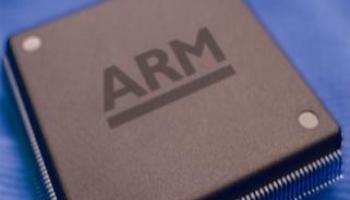British chip firm ARM has created a microprocessor framework aimed at the rise of machine-to-machine (M2M) technologies and is pimping it as the most energy-efficient 32-bit design ever.
ARM wants to see the 32-bit Cortex-M0+ processor, which pushes out just nine microwatts per megahertz , installed in microcontrollers that would manage interaction between wirelessly-connected devices.
Such microcontrollers will appear in devices such as sensors for managing building lighting and body monitors hooked up to health-check equipment, the firm hopes. ARM also wants to see the microprocessors installed in consumer electronics, from washing-up machines to children’s toys.
A 32-bit future
ARM claimed the current 8 and 16-bit microprocessors used by many of today’s machines do not have the intelligence or the functionality to deliver such services effectively.
 As for what has actually gone into the design, ARM has built on its Cortex-M0 processor released in 2009. The Cortex-M0+ comes with enhanced debug capabilities, a two-stage pipeline to cut the number of cycles per instruction (CPI) and a reduced required flash size for lower power consumption.
As for what has actually gone into the design, ARM has built on its Cortex-M0 processor released in 2009. The Cortex-M0+ comes with enhanced debug capabilities, a two-stage pipeline to cut the number of cycles per instruction (CPI) and a reduced required flash size for lower power consumption.
It also includes a speedier I/O interface, allowing for single cycle access. To “wiggle pins” on many current 8 and 16-bit microprocessors, more cycles are needed, Richard York, ARM’s director of product marketing, told TechWeekEurope.
“[Previous designs] typically take two or three cycles to do that sort of thing,” York said. “What we wanted to do with M0+ is deal with that particular concern, so we built in a special piece of hardware that lets you write the code in exactly the same way as you used to write it, so the way you’ve written your program hasn’t changed, but instead of taking two or three cycles to wiggle pins, it can now wiggle pins every cycle.”
Howdy partner
Wide-ranging compatibility with other ARM designs, including Cortex-M0, should make implementation easier for licensees too.
Freescale Semiconductor will be one of the first partners to build on the Cortex-M0+ design, which ARM claimed is twice as efficient as the closest architecture.
“The addition of products built on the Cortex-M0+ processor will make our fast-growing Kinetis MCU line one of the industry’s most scalable portfolios based on the ARM Cortex architecture,” said Reza Kazerounian, senior vice president and general manager of Freescale’s automotive, industrial and multi-market solutions group.
“With the ability to reuse code, higher performance and improved energy efficiency, the Cortex M0+ processor will enable designers to transition from legacy 8-bit and 16-bit proprietary architectures to our new Kinetis devices, without sacrificing cost and ease of use benefits.”
ARM has over 120 partners using Cortex-M family designs, of which 10 or 11 are selling products directly to market. York expects most of those to use the Cortex-M0+ design “relatively soon.”
Think you know your microprocessors? Test your knowledge with our quiz!




